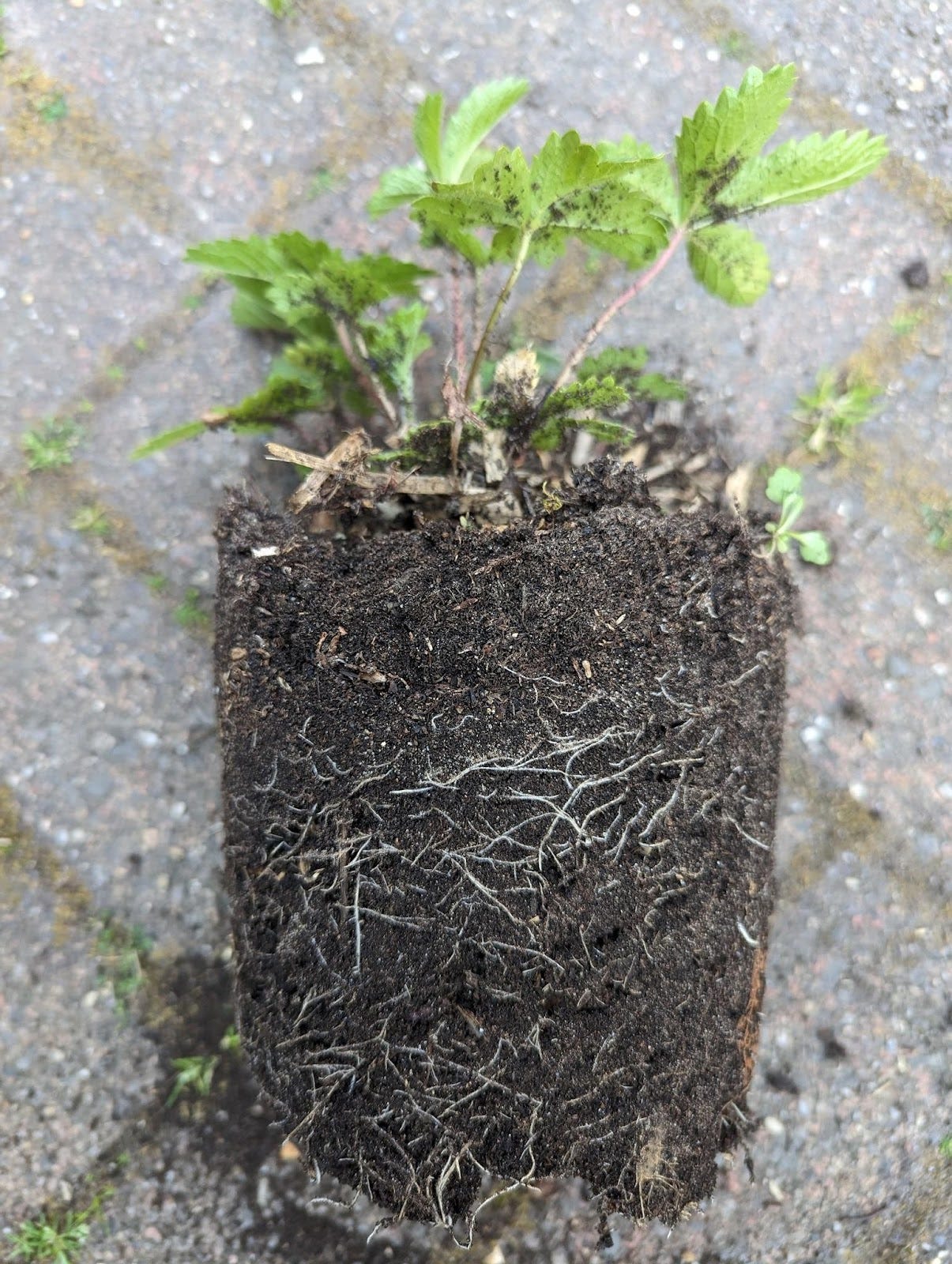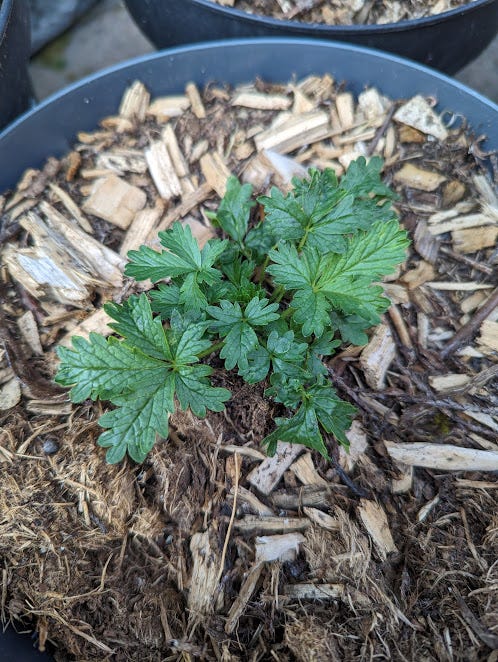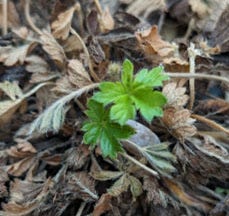For convenience, here is an index of my Silverweed related content.
If you’re new to this substack, welcome! This is at least part 5 of my series on domesticating Silverweed (Argentina anserina) as a perennial root crop, though many of posts have at least something to do with this plant. This link should bring up everything Silverweed relevant that I have written. A good place to start will be this post:
Summer has arrived, and the Potentillae tribe are waking up. The plants that I sourced in the winter and spring for the breeding experiments have all survived with the exception of a white cultivar of Potentilla recta called ‘alba’. That one exhibited none of the legendary tenacity of P. recta that others have reported and withered in its pot. I am fine with this as I only purchased this one because I thought it was P. alba (a much rarer, endangered species.
If you’re wondering why I’m crossing different Potentilla species with Silverweed, a different species, detour over to
Argentina anserina x Potentilla recta (tormentil)
A friend from the Isle of Skye graciously sent me several samples of Potentilla erecta (tormentil). Pre-warned about their virtuosity, I placed these in a shallow pot in a very shady spot but they still have emerged like champions and have begun to freely flower.
I’ve been observing the flower buds for a while and plucked one that was almost ready to bloom and removed it, separating out the flower to reveal the pollen carrying stamen. Then, I located a silverweed flower in the same pre-bloom state and revealed the stigma and rubbed the two flowers together. It’s tricky to get the timing correct, so I decided to pre-bag some flowers from both species so I can ensure that I’m the first “pollinator” to approach. I chose the earliest leafing silverweed for my initial experiments - but really, it was also fortuitous. One thing I will call out is that tormentil seems to produce very little pollen at least compared to silverweed.

Argentina anserina x Potentilla nepalensis ‘Miss Willmot’ (Nepal cinquefoil)
Nepal cinquefoil seems to be slower to bloom than tormentil (P. erecta). I’ve pre-bagged some flower buds so I’m not caught unawares. You may be aware that I discussed Potentilla nepalensis at length in a previous post. I acquired a specimen because there have been scattered reports of their starchy roots and with this in mind, I upended a pot to see if there were any tuberous roots. Alas, I did not observe any on the outside of the root ball. It is still early days and perhaps the storage roots will form later.
Perhaps at some point I will locate the non-cultivar version of Potentilla nepalensis which will probably have less inbreeding and therefore greater vigour.
Argentina anserina x Potentilla crantzii (Alpine cinquefoil)
I managed to germinate some Potentilla crantzii (Alpine cinquefoil) seeds using both the classic damp paper towel trick and in normal potting soil on a window sill. I was only able to find one online source for the seeds so these are quite precious to me, especially as the germination rate was low. I was able to document what I believe is the first ever public image of a day old cotyledon.
I do not expect these young plants to flower this year - two years to flowering seem normal in the Potentillae tribe, though I will note that I might have some Silverweed seedlings that flowered in their first year. Next year, I will be stricter with growing silverweed seeds in individual pots to see if this is really true.
Argentina anserina x Potentilla neumanniana (Spring cinquefoil)
P. neumanniana is also known as Spring cinquefoil and as far as I have found, has only one remarkable feature. It is one of the earliest flowering species in the Potentilla family and it’s for this reason alone that I decided to try the hybridisation. I thought that if I left this plant in the deep shade I could delay the flowering enough to overlap with silverweed but this didn’t work. Actually, by tucking the plant away in the shade, I forgot about it and only just saved it in time (hopefully).
Next year, I will try and save the pollen and attempt a cross.
Notes
If you’re wondering what I use to bag flowers, I’m using fine gauze that is available in craft shops that is often used for holding jewelry or decorating party tables, and tiny little plastic clips. Both of these can be found on eBay, if not in your local craft shop.
Kudos to Shane for helping me with the plant breeding biology and tips on bagging flowers. Check out his substack too!
At some point, I will write more in depth notes on P. erecta, P. neumanniana and P. crantzii in the same fashion as my P. nepalensis exposé. I’m aware I also promised a piece on Silverweed recipes, so I have a lot of post fodder!












Hurray! You hit critical mass with your half dozen or so species. Fingers crossed you get some seed to carry your enthusiasm forward. The pollen production issues could be a timing issue (some plants shed their pollen at different times of the morning) or it could be a temperature issue (might still be too cold, or hot). But it doesn't take much pollen to get things going. I find I can often feel the pollen as a texture between my fingertips even if I can't see it.